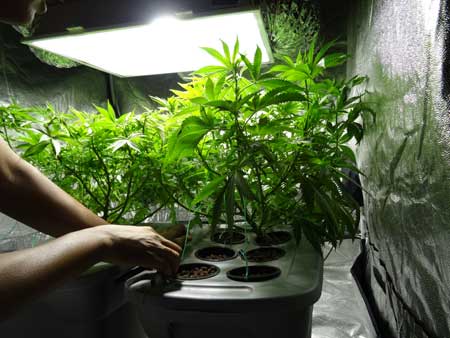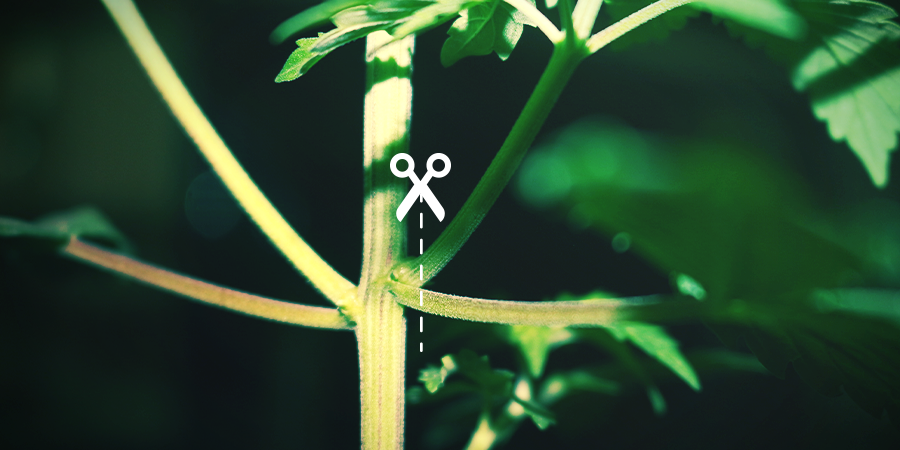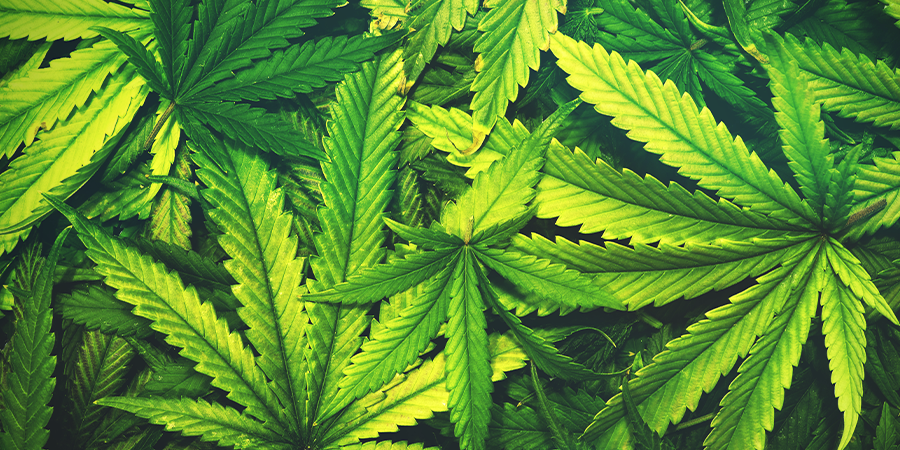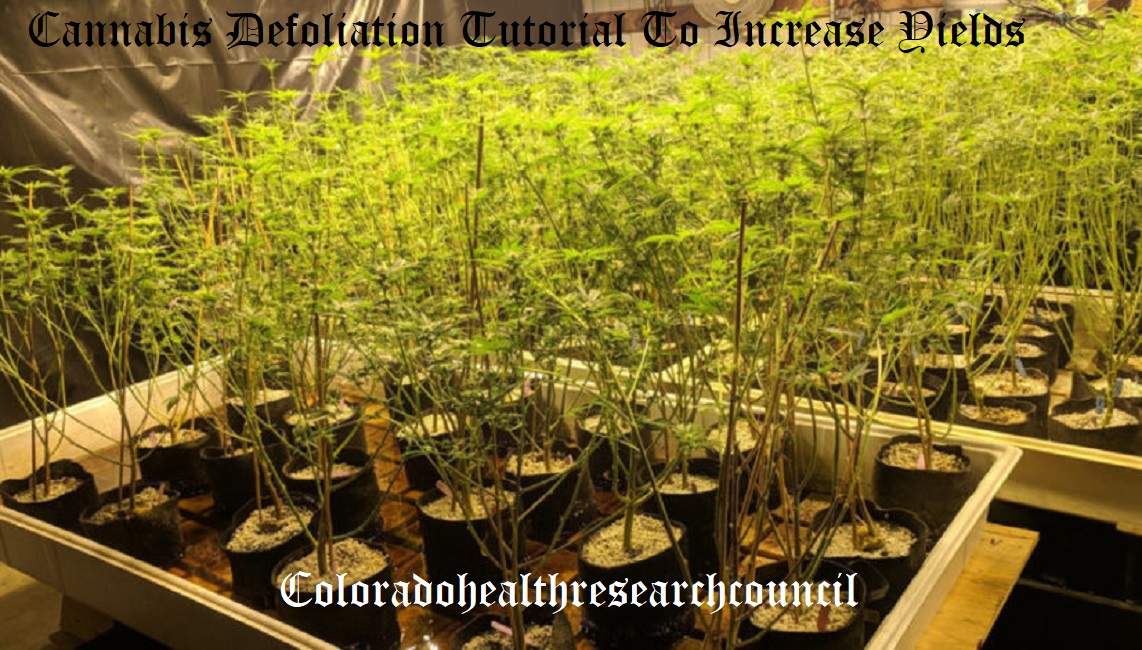Why Cannabis Defoliation?
Cannabis “defoliation” is the process of removing leaves from your cannabis plants. Some growers call this “lollipopping” when applied to the bottom of the plant. Many growers believe defoliation can be used as a tool to increase cannabis yields indoors, but there are also a lot of cannabis growers who say that plucking leaves off cannabis plants (defoliation) is not beneficial for your cannabis yields in any way. Today, I’m going to provide evidence that defoliation does indeed work and I believe the pictures I’m going to show you in this article will speak for themselves!

Over the years I’ve heard many naysayers swear defoliation can’t work:
“My friend is a grower and he says defoliation doesn’t work”
“I read in a book that defoliation is a terrible idea”
“I tried it and it hurt my yields!”
“The plant NEEDS those leaves or it wouldn’t grow them”
There is some truth to what they’re saying. Defoliation isn’t for everyone in all setups. It should only be used in specific situations. If you do defoliation the wrong way it will hurt your plant and reduce your yields. As one example, defoliation doesn’t appear to be effective at significantly increasing yields for outdoor plants. But for indoor growers, cannabis defoliation done right results in larger yields.
Unfortunately, I’ve also seen growers try to defoliate their cannabis plants the wrong way, most especially by pulling leaves from plants that are slow-growing and/or sickly. Defoliation will not make up for other problems like too-hot conditions, not enough light (or conversely too much light) or nutrient deficiencies. If you try to defoliate plants that are not in top condition, you’re asking for trouble because defoliation will only stress your sick plants further.
The truth is, when growers defoliate their plants the wrong way, they’ll end up with slow growth and reduced yields, and I believe that is where a lot of the criticism of defoliation is coming from.
What is cannabis defoliation?
While it’s simple enough, there’s definitely some risk involved with defoliation. Specifically, it’s all too easy to over-defoliate a plant, stunt its growth, and remove nodes that could’ve developed some great bud.
Many growers question defoliation. After all, why would a plant waste energy on growing unnecessary foliage? Well, in nature, cannabis plants use their leaves to store nutrients for stressful times like droughts, nutrient shortages, and pest infestations.
When you’re growing indoors, however, a lot of this excess foliage becomes unnecessary. After all, unlike out in the wild, indoor plants grow in carefully controlled environments with, ideally, perfect temperature and humidity levels and a low risk of pests. In this environment, the thick foliage becomes more of a burden.
That’s where defoliation comes in; by removing some of this excess foliage, not only do you free up some of your plant’s energy (by reducing the amount of foliage it needs to keep alive), but you help your plant make better use of its limited light source. Finally, defoliation also improves airflow around your plants, which in turn helps reduce temperature/humidity issues and the risk of pests/mould.
Note: Some growers confuse defoliation with lollipopping. While lollipopping does necessitate removing foliage, it involves stripping the entire bottom part of a plant, including the nodes (and sometimes removing entire branches), leaving the branches mostly bare like a lollipop stick. Defoliation, on the other hand, involves strategically removing leaves from different areas of the plant, and doesn’t inherently involve removing bud sites or branches.
How does defoliation work?
Unlike pruning, which is more aggressive and strips away branches and nodes, defoliation only removes leaves. However, you may opt to defoliate and prune your cannabis plants as well depending on the needs of your plants.
The purpose behind defoliation is to shed light on buds that are hiding under a canopy of leaves. Removing leaves from a cannabis plant during the flowering stage will expose the buds to ample light and oxygen, thereby facilitating quicker and plumper growth. While defoliating plants during the flowering stage is the norm, some experienced growers have been known to defoliate their cannabis plants even earlier in the vegetative stage. But because the vegetative stage presents more challenges, novice cultivators should avoid defoliating during that phase until they gain more experience.
For optimal defoliation results, these factors should coincide:
- The plants are leafy to the point that the leaves are overlapping and on top of one another
- The whole crop is hardy, healthy, and fast-growing to begin with
- Large fan leaves are obscuring some buds, which will fare better when exposed to more light and air
- Plants are in an indoor environment with strong lighting (not necessary, but helpful)
If your plants exhibit the opposite traits — they are fragile, not leafy, and buds are not concealed — then defoliating during the flowering phase will probably not deliver the desired outcome.
In terms of when to defoliate during the flowering phase, many growers suggest one round at the beginning of the stage and another during the third week. But you can always return to the visual clues noted above to determine when is the best time to defoliate your cannabis plants. Most cultivators agree, though, that taking away too many leaves before the end of the flowering period can be counterproductive.
As a rule of thumb, the earlier in the flowering stage you start defoliating, the better.
Whenever you choose to defoliate, start by tackling the large, overlapping fan leaves. Cutting away these leaves provides a breath of fresh air for the buds, setting them free from overgrowth and pointing them towards the light. Probe deep in the plant, from the bottom foundation to clear away space for the buds to flourish.
You may also opt to carefully remove any small stems at the bottom of the plant that are unlikely to bear buds. Anything you remove from the bottom of the plant — whether it’s weak stems or bushy leaves — lets the plant’s energy rise to the top colas and the lushest part of the harvest.
HOW TO DEFOLIATE CANNABIS

Removing leaves is as easy as the snip of scissors or the pinch of a thumbnail. Many growers recoil in horror at the mention of defoliation. Arguing that nature has it right and just let it grow. However, field tests show consistently bigger yields for defoliated plants. The debate continues as to whether there are any disadvantages to well-managed defoliation.
When you decide to defoliate, what actual technique to apply is up to you. Each one increases yields in similar ways only the silhouettes of the plants differ. Factors to consider are genetics, grow space volume, and light intensity.
Defoliation in general can be used on untrained plants to increase light penetration and airflow, rather than any specific technique being used. Leaves that prevent light penetration are removed during the life of the plant at the growers discretion. Even during flowering. Cannabis flowers are incredibly efficient at photosynthesis and will recover promptly after defoliation.
Mainlining uses a number of radical defoliations on young marijuana plants. The topping, undershucking and complete node removal used with this technique entirely changes the aspect of any phenotype. Mainlining produces eight or more main colas per plant with no other secondary growth.
Lollipopping can be used on topped and trained or untopped naturally shaped plants. It involves undershucking or defoliating everything but the primary end buds on any branch of flowering cannabis. Lollipopping endeavours to concentrate all the plants flowering energy into fewer, but larger flower clusters. This technique opens up the lower branches to much more light and stimulates good airflow.
Schwazzing is a technique where the defoliating is done at specific times during the plant’s life cycle. Plants are left to vegetate untouched. Prior to flipping the light cycle to 12-12 all the fan leaves are removed from the main trunk and the side branches. Plants are then allowed to flower for three weeks. Then the dominant fan leaves and any shadow-casting leaves are removed.
With schwazzing the plants are left to mature from this point. Some daring growers will schwazz again (called miamimangoing in old seventies grow books). The plants are defoliated of fan leaves once again at week five or six before being left to mature.
CANNABIS DEFOLIATION: HOW MUCH IS TOO MUCH?

There is a sorcerers’ art to getting the defoliation-to-transpiration-needs ratio right. Overdoing it has the effect of overfertilizing your plants and giving them nutrient stress. When too much leaf material is removed and efficient transpiration is interrupted, nutes can build up in the root zone, causing cooking or nutrient lockout. Nutrient strengths will need to be adjusted to suit the less demanding plants until they recover. Experience eventually gives you the sense for verdant volume in a grow room.
A good rule of thumb is to leave the growing tips undisturbed, plus two fully developed fan leaves. Being anymore heavy-handed may slow the plant’s growth. You may notice new tips turn bright green from nutrient stress and stems turn a slight red or purple. This will go away as the plant recovers over the next few days. Only that time could have been spent genuinely growing rather than convalescing.
